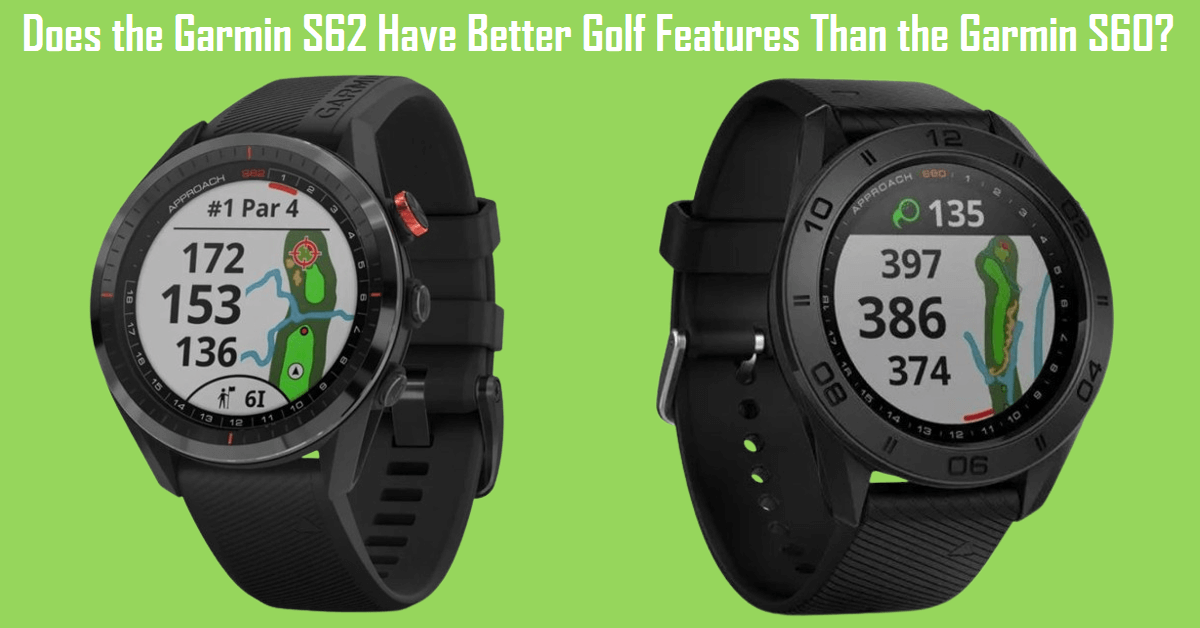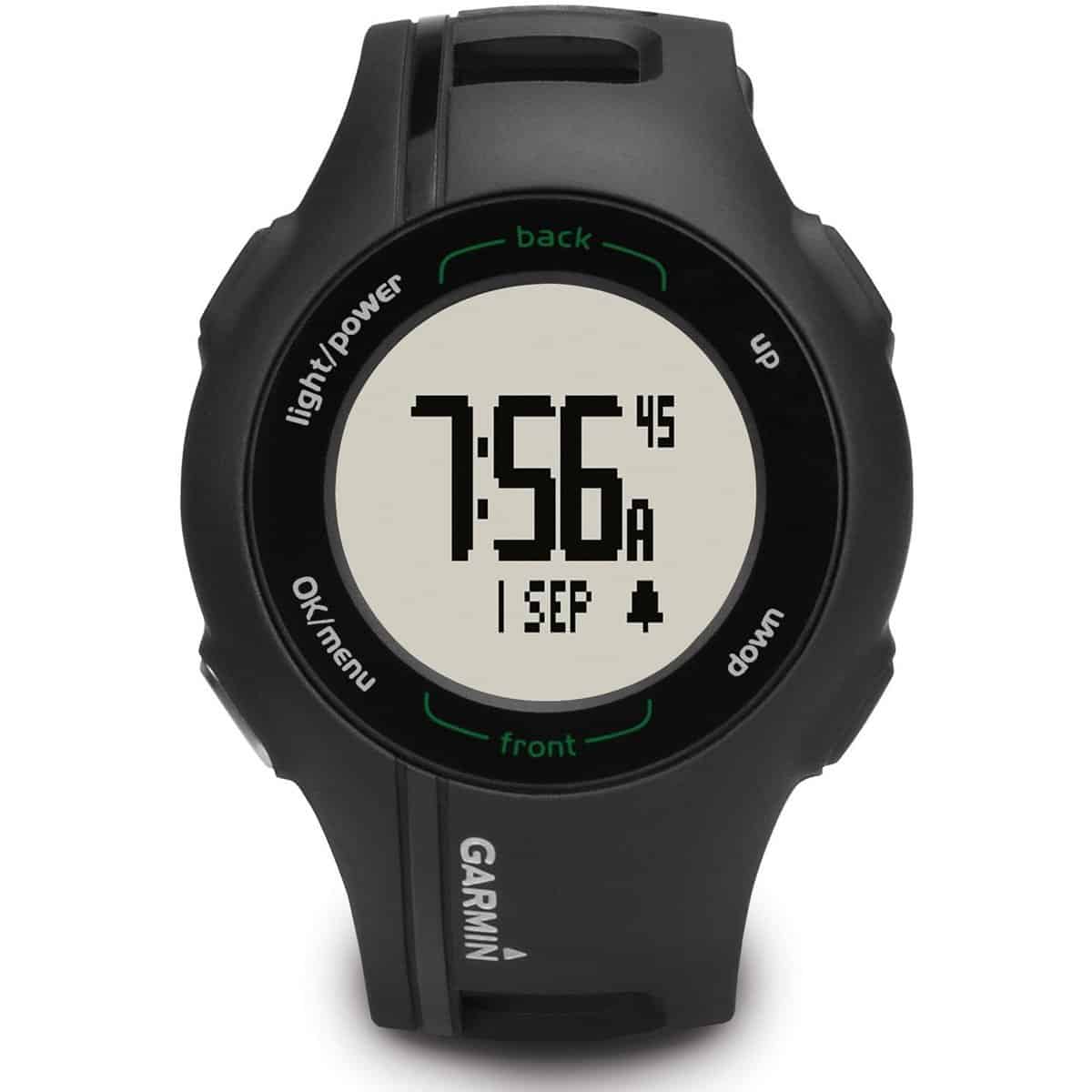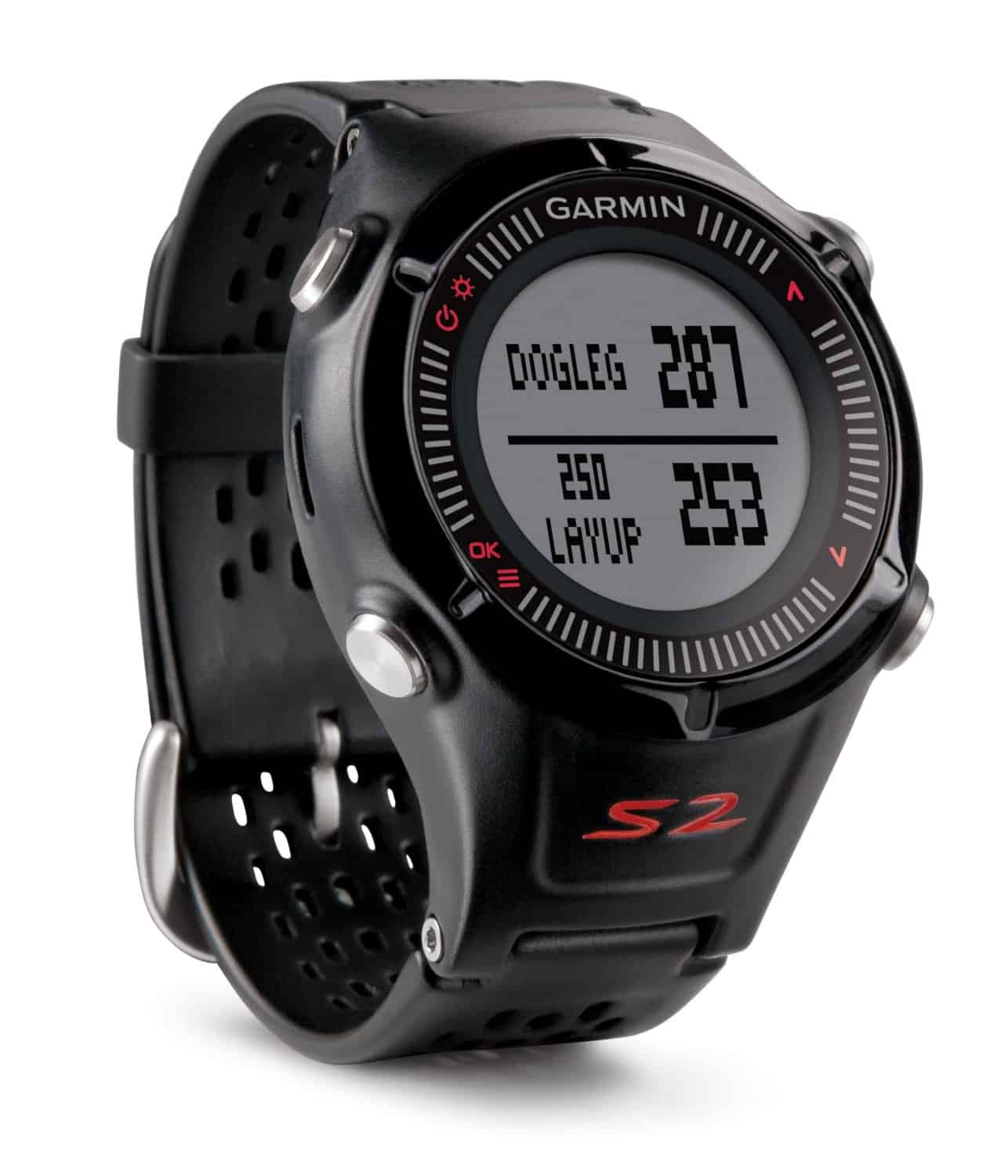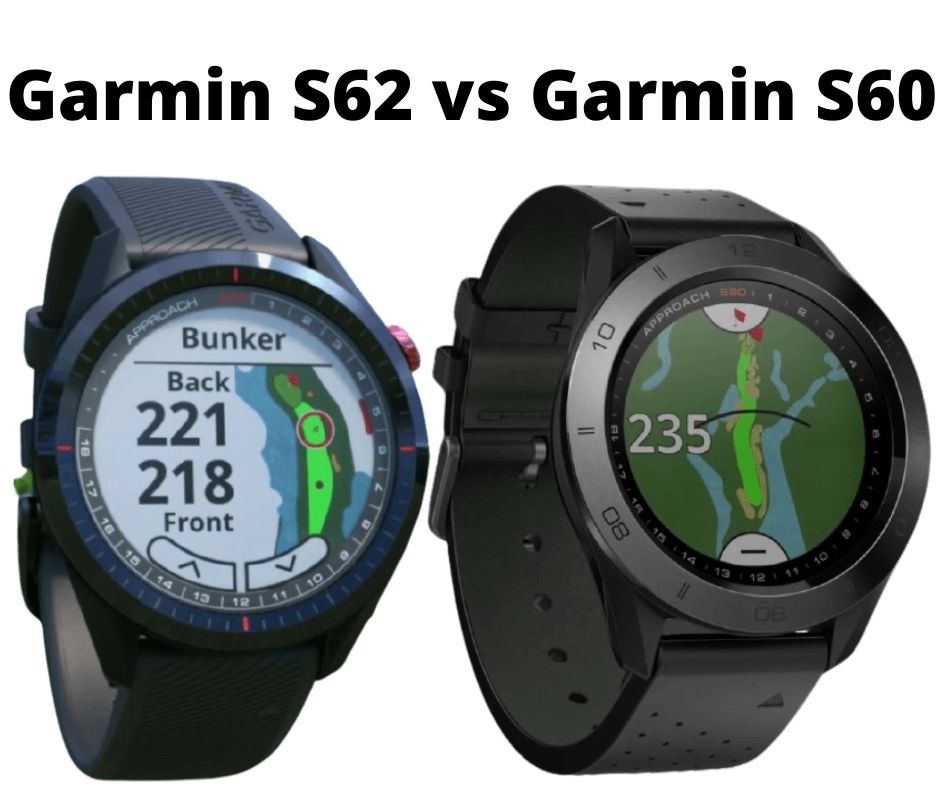Key Takeaways
- Both the Garmin S60 and S62 come with a built-in running app for tracking distance, time, and pace. The Garmin Approach S40 also comes with a built-in running app but it has fewer features.
- The S40 collects limited running data including distance, time, and pace, using GPS for outdoor runs and an accelerometer and gyroscope for indoor running activities such as treadmill running. It does not measure the cadence.
- Users can turn on the running app by accessing the interface, navigating through menu options, and selecting the ‘Activity’ and ‘Run’ options.
- The Garmin Connect app can analyze the measurements captured from your running activities, monitor progress, and customize reports for more in-depth analysis.
I absolutely love going for a run every single morning, so finding a smartwatch that can handle both my outdoor and treadmill runs has been a top priority. That’s why stumbling upon the Garmin Approach S40 felt like striking gold! Its sleek design and incredible features make it the ultimate running companion.
But here’s the burning question: Can the Garmin Approach S40 really be used for running? I’m here to tell you that not only does it track essential running data such as distance, pace, and time accurately, but it also provides valuable insights through the Garmin Connect app.
This article will explore the type of running data the Garmin S40 collects, how to activate the running app, and even compare its metrics with dedicated running watches.
Table of Contents
- 1 Can the Garmin Approach S40 Be Used for Running?
- 2 What Type of Running Data Does the Garmin S40 Collect?
- 3 How Do You Turn on the Running App on the Garmin S40?
- 4 What Options Are Available on the Activity Settings Screen?
- 5 How Can I Use the Garmin Connect app to Look at My Running Data?
- 6 What Types of Sensors Does a watch need to have to Track Your Indoor and Outdoor Runs?
- 7 How to Improve the Accuracy of Your Measurements?
- 8 Garmin Approach S40’s golf-specific functionalities and benefits
- 9 Differentiating the demands of running and golfing activities
- 10 Analyzing the impact of GPS accuracy during running
- 11 Comparing running metrics with dedicated running watches
- 12 Optimizing battery life for extended use during runs
Can the Garmin Approach S40 Be Used for Running?
This versatile watch is designed to cater to all types of runners and provide accurate data to enhance your performance.
The Garmin Approach S40 offers GPS tracking, so it can accurately measure your distance covered, time, and pace. You’ve got all this information right at your fingertips, so you can keep an eye on how you’re doing and make any changes needed to up your running game.
Also the Garmin Approach S40 offers various training features that can help you reach your running goals. It has customizable workouts that you can follow, allowing you to tailor your runs based on specific targets like distance or time.
Unfortunately, this watch does not provide audio prompts during runs to keep you motivated and informed about important metrics like the best running watches for 2024 like the Garmin Forerunner watches do. It also does not come with onboard music storage.
The Garmin Approach S40 syncs with the Garmin Connect app, where you can analyze in-depth data about each run. You can view detailed maps of your routes, track personal records, and even compete with other runners through challenges. This social aspect adds an extra layer of motivation and freedom as you strive for improvement.
What Type of Running Data Does the Garmin S40 Collect?
When using the Garmin Approach S40, which is primarily designed for golf, there are several limitations to consider when it comes to tracking running activities.
Firstly, the device may not provide as comprehensive and detailed running metrics compared to dedicated running watches. It might lack features like heart rate monitoring or specialized training programs tailored specifically for runners.
Secondly, the GPS accuracy could be compromised during runs due to the device’s focus on golf functionality. While it still provides basic distance and pace measurements, there might be occasional discrepancies in tracking routes accurately or recording elevation changes precisely.
Lastly, the user interface of the Garmin Approach S40 might not be optimized for runners, making it less intuitive and efficient than purpose-built running watches.
The Garmin S40 collects data on distance, time, and pace (but not cadence) during outdoor runs.
With the S40, you can easily keep track of all these important metrics to monitor your progress and make necessary adjustments to your training regimen. The GPS feature provides accurate distance, time, and pace measurements, while the built-in accelerometer provides even more accurate measurements of these same metrics because the GPS is turned off for indoor activities.
I think that you should realize that the accuracy of these measurements improves over time if you use the built-in GPS for a few outdoor runs or walks. For those looking for even more precise measurements, a Garmin foot pod can be purchased separately for about $70. You will have to look for a used one on eBay because Garmin has discontinued this product.
Product Specs:
- Touchscreen display
- Golf-specific features (such as course mapping and distances to hazards and flagsticks)
- Collects data on distance, time, and pace
- Uses GPS for outdoor running activities and built-in accelerometer and gyroscope for indoor running
- Self-calibrating accelerometer for indoor activities
Pros:
- Multi-sport functionality (including running and cycling)
- Can be used both indoors and outdoors
- Stylish design suitable for everyday wear
- Long battery life
Cons:
- Limited running metrics compared to dedicated running watches
- Potential compromises in GPS accuracy during runs
- User interface may not be optimized for runners
- Additional purchase of a foot pod for $70 required for more accurate measurements
How Do You Turn on the Running App on the Garmin S40?
The Garmin S40 is easy to use because it has a touchscreen and only one button on the side of the watch.
To activate the running app on your Garmin S40, follow these steps:
- To activate the running app, you must start by pressing the action button on the watch. This will take you to the ‘Play Golf’ screen.
- Located at the bottom of the screen are four little dots in red, blue, green, and white colors. If you press the four dots, you will be taken to a screen with various menu items including ‘Activity’, ‘Stopwatch’, and ‘Timer’.
- If you click on the ‘Activity’ menu item, you will be taken to a screen that let you begin your activity if you press the action button. There are various activities that the Garmin S40 can track including ‘Walk’, ‘Run’, and ‘Bike’. If you want to select the ‘Run’ option, you will have to select the ‘Settings’ option at the bottom of the screen.
- In the ‘Settings’ section, you will see the following menu items: ‘Activity Type’ and ‘Auto Lap’. If you select the ‘Activity Type’ menu item, you will be taken to the ‘Activity Type’ section where you will see options for ‘Walk’, ‘Run’, and ‘Bike’. Press the ‘Run’ option to activate the running app.
- Press the action button to start recording your running activity. When you are done, press the action button again to stop recording.
What Options Are Available on the Activity Settings Screen?
The Activity Settings screen on the Garmin Approach S40 offers four options: Activity Type, Auto Lap, Auto Pause, and GPS. These options enhance your running experience by providing functionalities tailored to your needs.
The Activity Type option allows you to choose between Walk, Run, and Bike. By selecting the appropriate activity type, the watch can accurately track your performance based on the specific activity you are engaged in.
Auto Lap is a useful feature that automatically marks laps at predefined distances during your run. This allows you to compare your performance over different parts of your activity, such as every 1 mile or 5 kilometers. You can even customize the distance for each lap.
Auto Pause is another handy option that automatically pauses the timer when you stop moving. This is particularly useful if your running route includes stop lights or other areas where you need to momentarily halt.
Lastly, GPS is an important setting that utilizes satellite signals to track your location during activities. It can be turned off when training indoors or to conserve battery life.
How Can I Use the Garmin Connect app to Look at My Running Data?
Check out your running data by using the Garmin Connect app on your smartphone. With the app, you can easily analyze and track your running activities, giving you valuable insights into your performance and progress.
The Garmin Connect app provides a range of features to help you make the most of your running data. One useful tool is the ability to view detailed information about each run, including time, distance, calories burned, pace, and speed. This allows you to see how you’re improving over time and identify areas for growth.
To further enhance your analysis, Garmin Connect offers customizable reports that allow you to look deeper into your running statistics. These reports provide a comprehensive overview of various aspects of your runs, such as elevation changes and splits. You can also compare different runs side by side to see how factors like terrain or weather affect your performance.
Also the Garmin Connect app enables you to set goals for yourself and track your progress towards them. Whether it’s aiming for a personal best in a specific distance or increasing your weekly mileage, setting goals can help keep you motivated and focused on achieving new milestones.
By connecting with friends on Garmin Connect, you can share your running activities and even engage in friendly competitions. This social aspect adds an element of fun and encourages accountability as you strive towards reaching new heights together.
With its comprehensive analytics options and social features, it empowers users to analyze their data effectively while fostering a sense of community among fellow fitness enthusiasts.
What Types of Sensors Does a watch need to have to Track Your Indoor and Outdoor Runs?
Get ready to track your indoor and outdoor runs with a watch that has the essential built-in sensors – accelerometer and gyroscope for indoor activities and either a GPS or accelerometer and gyroscope (if the GPS is disabled) for outdoor activities. These sensors play a vital role in accurately measuring your speed, distance, and pace while you run.
To track your indoor runs, you’ll need the built-in accelerometer and gyroscope in the watch. These sensors work together to measure your movements and provide data on your running performance. The GPS is disabled for indoor activities because the watch cannot receive a signal from any orbiting satellites while it is indoors so the watch will have to rely solely on these sensors to calculate your speed, distance, and pace.
For outdoor runs, you have two options. You can use the built-in GPS in the watch to track your time, distance, and pace. Alternatively, if you prefer not to use GPS or are unable to get a signal, you can still track your outdoor runs using just the accelerometer and gyroscope. The accuracy of these measurements improves over time as the accelerometer self-calibrates based on data collected from a few initial outdoor runs with the GPS.
How to Improve the Accuracy of Your Measurements?
To enhance the precision of your measurements, you can elevate your running experience by investing in a Garmin foot pod. This small device attaches to your shoe and utilizes a built-in accelerometer to accurately record your pace, distance, and time. It sends data to a connected device like a smartphone or smartwatch for real-time display and later analysis.
For optimal accuracy, it’s crucial to ensure that the foot pod remains in the same position each time you use it. Any movement or change in shoe type can affect the calibration factor and compromise accuracy. While a Garmin Foot Pod provides accuracy upwards of 90% out of the box, calibrating it further can improve accuracy to around 98-99%. This level of precision rivals that of GPS technology, which typically offers 97-98% accuracy.
However, it’s important to note that while foot pods excel on smooth surfaces with predictable strides, their performance may be less consistent during trail running. In such scenarios where tree cover or twisting trails impact GPS signals, foot pods tend to offer more reliable current pace information compared to GPS devices which can have errors resulting in inaccurate pace readings.
Garmin Approach S40’s golf-specific functionalities and benefits
When you hit the golf course with the Garmin Approach S40, you’ll be amazed by its golf-specific features and how it can enhance your game. This GPS smartwatch is designed to provide accurate distance measurements, detailed course maps, and advanced scoring options.
It allows you to view precise yardages to hazards, layups, and greens, giving you a better understanding of the course layout. The Green View feature lets you see the shape of the green and manually adjust the pin position for more accurate shot planning.
One of the important benefits of the Garmin Approach S40 is its AutoShot round analyzer. It automatically tracks your shots along with their distances and records them for post-game analysis. This feature helps identify areas where improvement is needed so that you can focus on enhancing your performance.
The watch also provides comprehensive stat tracking capabilities, allowing you to monitor fairways hit, greens in regulation, and putts per round. By analyzing these statistics over time, you can identify patterns in your game and make informed decisions about how to improve.
Differentiating the demands of running and golfing activities
Now that we have explored the golf-specific functionalities and benefits of the Garmin Approach S40, let’s shift our focus to differentiating the demands of running and golfing activities.
While the Garmin Approach S40 excels in providing accurate data for golf-related metrics such as distances to flagsticks, doglegs, and hazards, it may not offer all the features that dedicated running watches provide.
To better illustrate this point, let’s take a look at a three-column table comparing the demands of running and golfing:
| Running | Golfing | |
|---|---|---|
| Tracking | Distance, time, pace | Distances to flagsticks, doglegs, and hazards |
| GPS Accuracy | Vital for route mapping | Essential for course navigation |
| Training | Interval workouts, VO2 max analysis | Swing tempo analysis |
As you can see from this table, while some aspects overlap between running and golfing watches like GPS accuracy, there are clear distinctions in terms of tracking capabilities and training features. Therefore, if your primary focus is on running activities rather than golfing ones, you may want to consider a dedicated running watch instead.
Analyzing the impact of GPS accuracy during running
The precision of GPS accuracy can make all the difference in a runner’s journey, ensuring they stay on track and reach their goals with unwavering confidence. When it comes to running, having accurate GPS tracking is crucial for several reasons.
Firstly, it allows runners to accurately measure their distance covered, pace, and speed. This information is vital for setting goals and monitoring progress over time.
Also accurate GPS tracking enables runners to explore new routes without the fear of getting lost. It provides a sense of freedom as they can confidently venture into unfamiliar areas, knowing that they can rely on their device to guide them back home.
In addition, precise GPS accuracy helps runners analyze their performance more effectively. By accurately tracking their routes and distances covered, runners can identify areas where they need improvement and make adjustments accordingly. They can also compare their performance on different routes or terrains to determine which ones suit them best.
Comparing running metrics with dedicated running watches
Comparing running metrics on dedicated running watches reveals the true extent of their comprehensive and detailed features for athletes seeking accurate performance analysis. Dedicated running watches are specifically designed for running, meaning they have more comprehensive and detailed running features and making them more reliable in tracking key metrics such as distance, pace, heart rate, and cadence.
Since the Garmin Approach S40 is primarily a golf-focused device, it only offers some basic running metrics. When compared to dedicated running watches like the Garmin Forerunner series or other brands like Polar or Suunto, the Approach S40 falls short in terms of providing advanced features and data analysis for runners.
To illustrate this point, let’s take a look at a comparison table:
| Feature | Dedicated Running Watches | Garmin Approach S40 |
|---|---|---|
| Sensors | GPS, GLONASS, Galileo, Accelerometer, Gyroscope | GPS, Accelerometer, Gyroscope |
| Heart Rate Monitor | Yes | No |
| VO2 max | Yes | No |
| Run Workouts | Yes | No |
As you can see from the table above, dedicated running watches excel in all areas when it comes to providing accurate and detailed running metrics. They offer more sensors for precise route mapping, heart rate monitoring for better training insights, run workouts, and a race predictor feature to help you see your predicted finish times for 5K, 10K, Half Marathons, and Full Marathons..
While the Garmin Approach S40 may be suitable for occasional runners or those who prioritize golfing over running activities, hardcore runners would benefit more from investing in a Garmin Forerunner running watch that offers a wider range of running features that will improve their finish times.
Optimizing battery life for extended use during runs
To make the most of your runs, it’s essential to maximize battery life on your dedicated running watch. The Garmin Approach S40 is not specifically designed as a running watch, but it does have features that can be useful for runners. However, optimizing battery life for extended use during runs can be a challenge with this device.
One way to optimize battery life is by adjusting the settings on your Garmin Approach S40. By turning off unnecessary features such as Bluetooth or notifications, you can conserve energy and prolong the battery life during your runs. Also lowering the display brightness and using a simple watch face can also help extend the battery life.
Another tip is to fully charge your Garmin Approach S40 before each run. This ensures that you start with maximum battery capacity and reduces the risk of running out of power mid-run.
Lastly, consider carrying an external portable charger or power bank with you during longer runs. This way, if you do need to recharge your Garmin Approach S40 while on the go, you have a backup option available.




